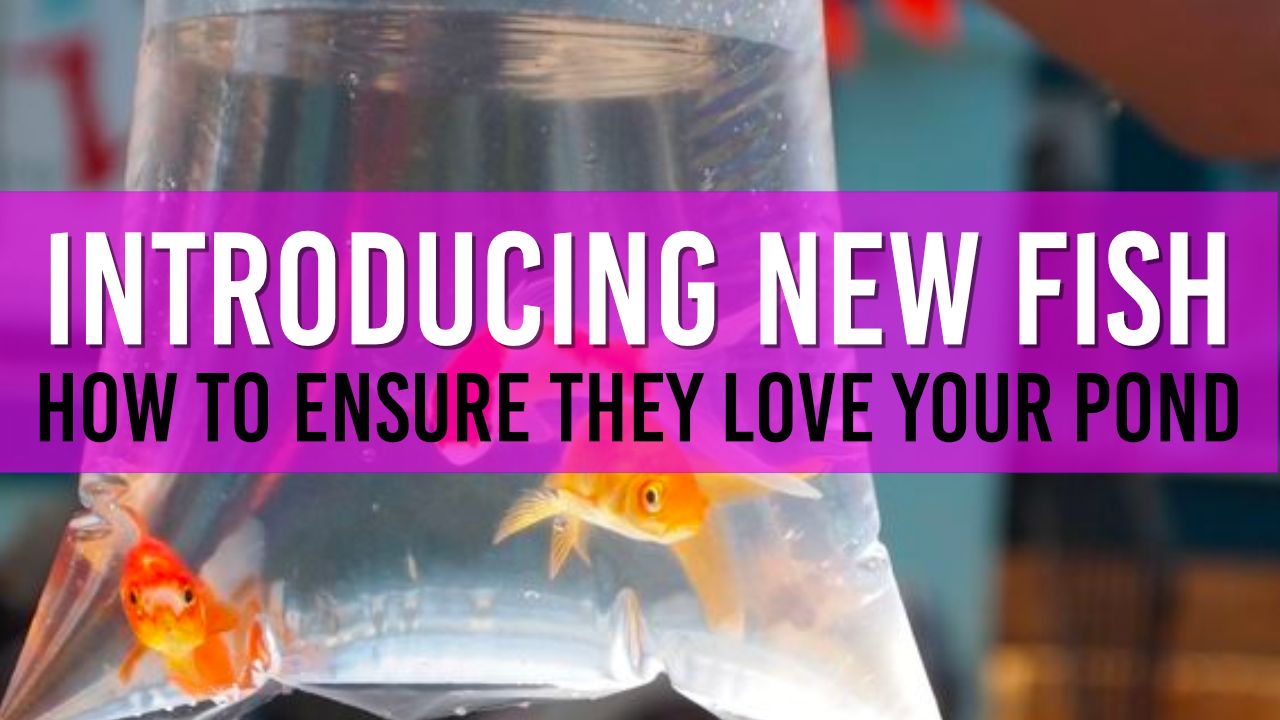How to Safely Introduce New Fish to Your Pond
The key point when introducing new fish to your pond is patience. Place the bag/container containing your new fish in the pond for 20 minutes, and start to slowly add more pond water to the container/bag- this ensures your new fishy friends has time to properly acclimate.

Table of Contents
Adding new fish to your pond can be an exciting experience, but it's essential to do it properly to ensure the health and well-being of your aquatic friends. In this article, we'll discuss how to safely introduce new fish to your pond, the importance of water cycling, and the necessity of proper pond filtration.
Acclimating New Fish to your Pond
To safely introduce new fish to your pond, follow these steps:
- Quarantine: Keep new fish in a separate container for at least two weeks to monitor for any signs of illness. This prevents the spread of diseases to your existing fish population.
- Temperature acclimation: Float the bag containing the new fish in your pond for 15-30 minutes to equalize the water temperature. This reduces the risk of temperature shock.
- Water acclimation: Slowly add pond water to the bag over 15-20 minutes, allowing the fish to adjust to the water chemistry.
- Release: Gently release the fish into the pond, avoiding sudden movements that could startle them.
Never introduce new fish to a pond that is currently experiencing an Algae bloom - their chances of survival are very limited.
Preparing Your Pond for New Fish
Before introducing new fish to your pond, you must ensure that the water has been cycled and that you have the necessary pond filtration in place. Here's a step-by-step guide to preparing your pond:
- Water cycling: It's crucial to cycle your new pond to establish a healthy bacterial balance. This process can take anywhere from 2 to 6 weeks. Test the water quality regularly to ensure the levels of ammonia, nitrite, and nitrate are stable.
- Pond filtration: A proper filtration system is essential for maintaining a healthy pond environment. Choose a filter and pump based on the size of your pond and the number of fish you plan to keep.
- Pond environment: Provide ample hiding spots, such as rocks and plants, to create a natural and stress-free environment for your fish. Proper pond lily planting can also enhance the aesthetic appeal of your pond.
Choosing the Right Fish
Selecting the right fish is essential for maintaining a healthy pond ecosystem. Start with hardy fish breeds that can adapt well to new environments. Additionally, consider your pond's size and the compatibility of the fish species you choose.
Maintaining a Healthy Pond Environment
Once your new fish are safely introduced, ensure the pond remains a healthy environment by:
- Monitoring water quality: Regularly test the water for pH, ammonia, nitrite, and nitrate levels. Perform necessary pond maintenance to keep these levels stable.
- Feeding: Provide a balanced diet and avoid overfeeding, which can lead to poor water quality.
- Protecting from predators: Implement measures to attract beneficial wildlife while deterring potential predators, such as herons and raccoons. 4. Pond aeration: Ensure your pond has adequate oxygen levels to support your fish and beneficial bacteria.
- Algae control: Prevent excessive algae growth by incorporating UV filters and maintaining a proper balance of plants and fish.
- Dealing with pests: Learn how to keep mosquitoes and rats away from your pond to protect your fish and maintain a healthy environment.
Seasonal Pond Care
Different seasons bring unique challenges for pond owners. Be prepared for these changes by:
- Spring: Check your pond for any damage caused by winter weather and clean the filter system. Start feeding your fish a high-quality diet as water temperatures rise.
- Summer: Monitor water levels and temperature to prevent overheating, and ensure your pond has sufficient aeration. Be mindful of hot weather's impact on your fish.
- Autumn: Follow our free 4-part guide on autumn pond preparations, including removing leaves and reducing fish feeding as water temperatures drop.
- Winter: Protect your fish by feeding them less and ensuring the pond doesn't freeze over. Keep an eye on your pond pump to prevent it from freezing or getting clogged with debris.

